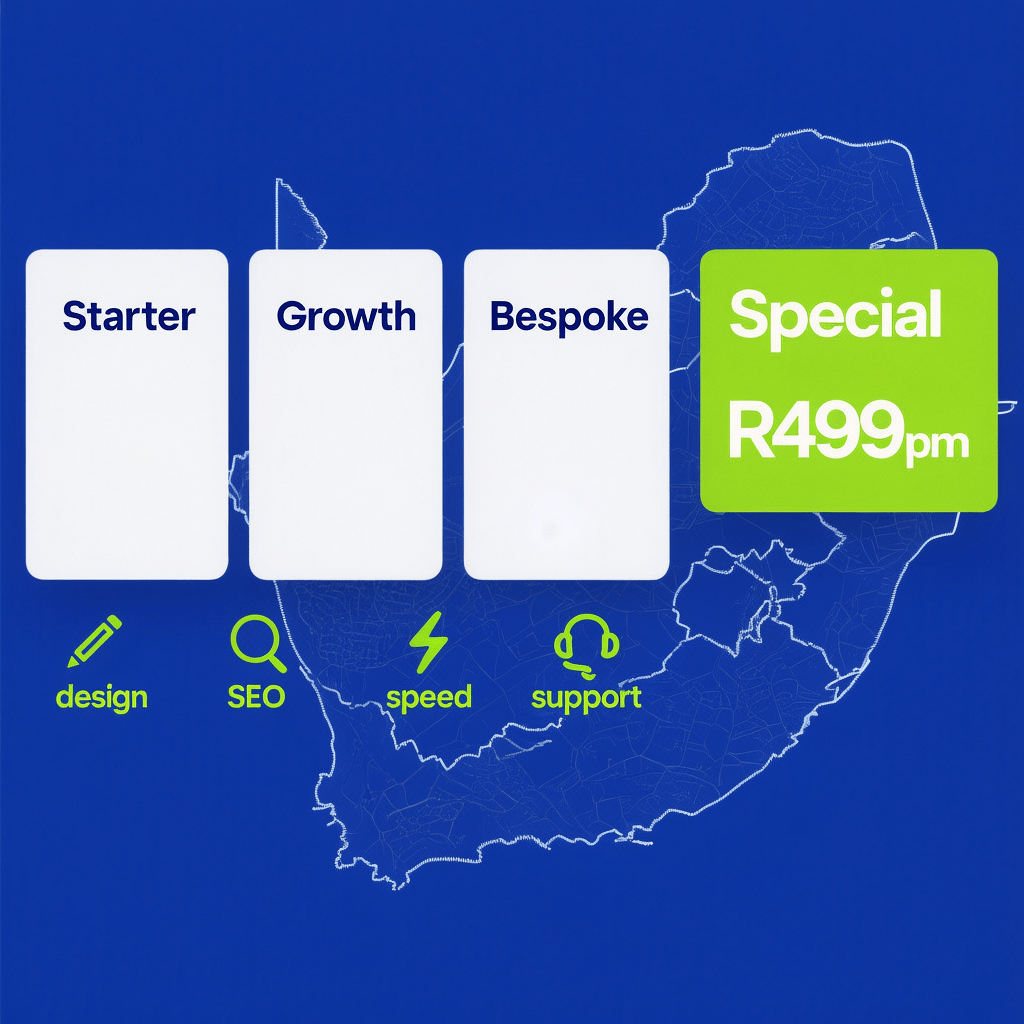
A high level view of planning, building, testing, and launching a successful web app.
Web Application Development: 17 Proven Ways to Win
By Morne de Heer, Published by Brand Nexus Studios

If you are planning serious web application development, you want a clear, practical path to launch. This guide breaks down the decisions that matter most so you can ship faster, stay secure, and keep users happy.
Right from the start, strong web application development is about balancing user needs, speed, and safety. You will learn proven tactics, from choosing the right stack to monitoring real user performance, so you can build with confidence.
What web application development really means
At its core, web application development is the process of building interactive software that runs in a browser and talks to servers through APIs and databases. It is the engine behind dashboards, portals, SaaS platforms, and marketplaces.
Unlike a basic website, a web app handles logins, permissions, transactions, and dynamic UI states. This reality changes how teams plan, code, test, host, and scale. Treat web application development as a product discipline, not just a coding task.
Popular app types and rendering models
- Single page applications that render on the client
- Server side rendered apps for instant content and strong SEO
- Hybrid frameworks that combine SSR and hydration
- Progressive web apps with offline support and push notifications
- Multi page apps that favor simple routing and predictable SEO
Each model affects performance, SEO, complexity, and team workflow. There is no one size fits all in web application development, so pick what serves your users and your team best.
17 proven ways to win at web application development
1) Start with a sharp problem statement
Clarity beats complexity. Define the single job your app must do and the one metric that proves success. In web application development, everything else flows from this focus.
2) Choose a stack your team can support
Familiar tech wins. Pick a front end framework your team knows, a back end that fits your workload, and a database you can operate well. Sustainable choices drive reliable web application development.
3) Design for performance from day one
Set performance budgets before coding. Target fast TTFB, strong LCP, low CLS, and quick interaction. Performance is a feature in web application development, not a post launch fix.
4) Secure by default
Apply security controls as you write features. Validate inputs, sanitize outputs, protect sessions, and least privilege everything. Security first is the only safe approach to web application development.
5) Plan data models and APIs together
Map user flows to data tables, indexes, and endpoints. Document contracts clearly and enforce them with tests. Tight data design reduces friction in web application development.
6) Keep the UI simple and accessible
Design with contrast, keyboard navigation, and clear error states. Accessible patterns lower support costs and improve outcomes in web application development.
7) Automate testing at every layer
Cover critical paths with unit, integration, and end to end tests. Add contract tests for APIs. Test automation is your safety net in web application development.
8) Build a clean CI and CD pipeline
Automate build, test, and deploy steps with gates for quality. Use feature flags to ship small. Reliable pipelines speed up web application development.
9) Ship small, ship often
Short cycles reduce risk. Release tiny changes behind flags, then expand. Iteration beats big bang launches in web application development.
10) Observe real user behavior
Instrument the app for performance and product analytics. Watch funnels, errors, and rage clicks. Insights cut guesswork in web application development.
11) Prepare for scale, not infinite scale
Design a system that scales one order of magnitude beyond your current needs. Practical capacity planning keeps web application development efficient.
12) Embrace caching and CDNs
Cache views, queries, and static assets. Put a CDN in front of your app. Smart caching is free speed in web application development.
13) Write docs people read
Document architectural decisions, runbooks, and API contracts. Good docs reduce onboarding time in web application development.
14) Budget like an owner
Account for cloud, licenses, observability, and maintenance. Clear budgets keep web application development sustainable.
15) Keep dependencies lean
Use fewer libraries and keep them updated. Every extra package adds risk and weight to web application development.
16) Plan for compliance early
If you need GDPR, POPIA, HIPAA, or PCI, map controls into the backlog. Compliance is part of web application development, not an afterthought.
17) Validate with real users
Run usability tests on prototypes, not only on code. Real feedback shortens the path to product market fit in web application development.
Smart stack choices for web application development
A great stack fits your team, your SLAs, and your roadmap. Stack debates can get noisy, so anchor choices to measurable goals in web application development.
Front end frameworks
- React for a huge ecosystem and battle tested patterns
- Vue for a gentle learning curve and clean templates
- Svelte for small bundles and a delightful developer experience
- Next or Nuxt for hybrid SSR and routing out of the box
Pick one and lean in. Consistency reduces friction in web application development.
Back end platforms
- Node or Deno for JavaScript end to end velocity
- Python with FastAPI or Django for rapid development and clarity
- Ruby on Rails for convention over configuration
- Go for performance and concurrency
- Java with Spring Boot for mature enterprise workloads
- PHP with Laravel for quick CRUD and straightforward hosting
Your team’s strengths matter most. Sustainable ops beats novelty in web application development.
Databases and data stores
- Relational databases like PostgreSQL or MySQL for strong consistency
- NoSQL options like MongoDB or DynamoDB for flexible schemas
- Search engines like Elasticsearch or OpenSearch for queries at speed
- Caches like Redis for hot data and rate limiting
Model the data with the user flows. The right data shape simplifies web application development.
API style
- REST for predictable resources and HTTP semantics
- GraphQL for client flexibility and fewer round trips
- gRPC for internal services and type safety
Document the contract, version it, and test it. Stable interfaces power smooth web application development.
Architecture patterns that scale with you
Architecture is a tool, not a trophy. Use the simplest approach that meets your needs in web application development.
Monolith vs microservices vs modular monolith
Start with a well structured monolith or modular monolith. Split services only when bounded contexts and team size demand it. This path reduces complexity in web application development.
Server rendering, SSR hybrids, and the JAMstack
SSR delivers instant content and SEO reliability. Hydration brings interactivity. Static front ends with API back ends keep things fast and secure. Choose the model that best serves your users in web application development.
Event driven and message queues
Use asynchronous queues for background work like emails, exports, and webhooks. This keeps your UI responsive and smooths spikes for web application development at scale.
12 factor app principles
Externalize config, treat logs as event streams, and keep dev and prod parity. These habits make web application development easier to operate.
Performance: make speed your product advantage
Users notice speed. Faster apps convert better and retain longer. Treat performance as a first class feature in web application development.

Front end techniques
- Code split routes and lazy load non critical components
- Inline critical CSS and defer the rest
- Preconnect to key domains and use HTTP 2 or HTTP 3
- Use modern image formats like WebP or AVIF
- Add loading lazy to images and iframes
Back end techniques
- Cache database queries and render results when possible
- Optimize indexes and avoid N plus 1 queries
- Use read replicas for heavy read workloads
- Terminate TLS at the edge with a CDN
Always measure in production. Real user monitoring shows what truly matters in web application development.
Remember to compress images and enable browser caching. Asset minification plus HTTP caching can cut load times dramatically in web application development.
Security essentials for web application development

Security is a continuous practice. Bake it into requirements, code review, CI, and release. You cannot bolt security onto web application development at the end.
- Validate and sanitize all inputs and outputs
- Use HTTPS everywhere and set HSTS
- Implement OAuth 2.1 and OpenID Connect for auth where appropriate
- Protect against XSS, CSRF, SQL injection, SSRF, and deserialization flaws
- Harden cookies with HttpOnly, Secure, and SameSite flags
- Rotate secrets and use a vault
- Run SAST, DAST, and dependency scanning in CI
- Log security events and alert on anomalies
Security debt compounds fast. Make secure defaults a habit in all web application development work.
Accessibility and inclusive design
Accessibility is usability. Follow WCAG, test with keyboards and screen readers, and provide clear labels. This improves outcomes in web application development for every user.
- Ensure sufficient color contrast and scalable text
- Use semantic HTML with ARIA only when necessary
- Design logical focus order and visible focus states
- Write descriptive alt text for images
- Provide helpful error messages with programmatic links
Accessible components are assets you reuse across web application development projects.
Testing strategy that actually catches bugs
Automated tests protect your roadmap. Balance unit, integration, and end to end tests so you prevent regressions in web application development.
- Unit tests for pure logic and utils
- Integration tests for controllers and data access
- End to end tests for critical user journeys
- Contract tests for APIs and third party clients
- Performance and load tests for peak hours
Add test data factories and seed scripts. Fast feedback loops win in web application development.
CI/CD and DevOps: automation as leverage

Automate everything you repeat. Strong pipelines reduce lead time and increase confidence in web application development.
- Trunk based development with small pull requests
- Feature flags for safe releases
- Blue green or canary deployments
- Infrastructure as code for consistent environments
- Observability baked into every service
Make deploys boring. That is the mark of healthy web application development.
Analytics and product metrics that matter

If you cannot measure it, you cannot improve it. Track activation, retention, and North Star metrics from day one of web application development.
For clear insight and reporting, explore our analytics and reporting
SEO for modern web apps
Search traffic compounds growth. Plan for discoverability during web application development, not after launch.
- Prefer SSR or hybrid rendering for content pages
- Set titles, meta descriptions, and canonical URLs
- Generate XML sitemaps and submit them
- Implement structured data for rich results
- Fix duplicate content with canonical tags
If you need expert help, consider our SEO services
UX patterns that reduce friction
Small details drive big wins. Clear onboarding, meaningful empty states, and helpful error messages all raise conversion in web application development.
- Use progressive disclosure to avoid overwhelming users
- Offer smart defaults and inline guidance
- Make forms short, forgiving, and mobile friendly
- Provide optimistic UI where safe
Design for the happy path and the messy path. Both matter in web application development.
Cost, timelines, and realistic scoping
Scope drives cost. Strong discovery and an MVP mindset control risk in web application development.
- List must have features for the first release only
- Estimate with ranges and revisit after discovery
- Price hosting, observability, and security from day one
- Map third party integration costs by usage tier
If you want a build partner that cares about outcomes, review our website design and development
Project management that keeps momentum
Good process creates speed. A light, disciplined workflow keeps shipping smooth in web application development.
- Run short sprints or a steady Kanban with WIP limits
- Use RFCs for high impact architectural changes
- Adopt code review checklists for quality and security
- Keep a clear definition of done that includes tests and docs
Healthy collaboration patterns compound over time in web application development.
Real world templates you can reuse
Save time with proven patterns. These building blocks speed up web application development across projects.
- Auth module with email plus social providers
- Role based access control with policy checks
- Audit logging for sensitive actions
- Notifications with email, SMS, and in app delivery
- File uploads with virus scanning and signed URLs
- Billing integration with retries and dunning
A small library of internal templates pays off fast in web application development.
How to plan your first release
Here is a simple path you can follow to move from idea to a confident launch in web application development.
- Pick a narrow target user and define one success metric
- Map the three critical user flows end to end
- Select a lean stack you can support in production
- Set performance budgets for Core Web Vitals
- Design a minimal data model and API contract
- Automate a CI pipeline with tests and scans
- Release a small slice to test users, then iterate
Follow this loop and you will reduce risk and accelerate learning in web application development.
Common pitfalls and how to avoid them
Most problems are predictable. Avoid these traps to stay calm during web application development.
- Over scoping the MVP and slipping deadlines
- Picking bleeding edge tech without support
- Ignoring performance until users complain
- Skipping security reviews to go faster
- Neglecting analytics and shipping blind
Stay focused on outcomes, not vanity metrics. That mindset wins in web application development.
Maintenance and scaling without drama

Operations is where quality shows. Plan upgrades, backups, and incident response as part of web application development.
- Patch weekly and keep dependencies current
- Back up data with tested restore procedures
- Define RTO and RPO and meet them
- Use dashboards and alerts everyone understands
- Practice post incident reviews that improve process
Steady maintenance avoids firefighting in web application development.
When to partner with experts
Sometimes you need extra hands or specialized skills. That is the right time to bring in a partner who brings experience and accountability to web application development.
Brand Nexus Studios can help with strategy, build, hosting, and care plans that keep your app fast and secure over time. Explore website design and developmentSEO servicesanalytics and reporting
Choose a partner who ships, measures, and iterates. That is how you win in web application development.
FAQs
Quick answers to common questions about web application development.
What is web application development and how is it different from a website?
It is the craft of building interactive software in the browser with data, auth, and dynamic UI. A website mostly serves content. A web app processes actions.
Which tech stack is best for web application development?
Use the tech your team supports well. React or Vue with Node and PostgreSQL is common, but your context matters more than trends.
How do I make my web app fast and reliable?
Set budgets, compress images, enable caching, code split, and use a CDN. Monitor Core Web Vitals and fix what users feel first.
How do I secure a web application?
Validate input, sanitize output, enforce strong auth, protect sessions, and scan dependencies in CI. Keep secrets in a vault.
Should I build a monolith or microservices?
Start with a modular monolith for speed. Split when scale and team structure make service boundaries obvious.
How much does web application development cost?
Costs depend on scope, integrations, and compliance. Start with an MVP, budget for observability, and iterate in phases.
Do SPAs hurt SEO?
They can if content renders only on the client. Use SSR, pre rendering, or hybrid frameworks with proper meta tags.
References



